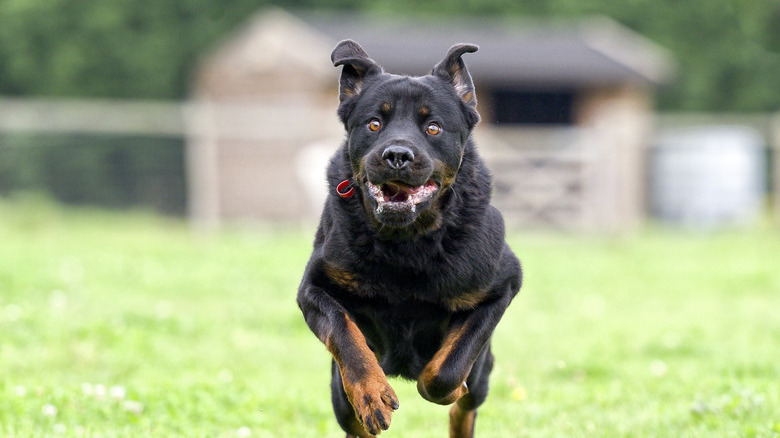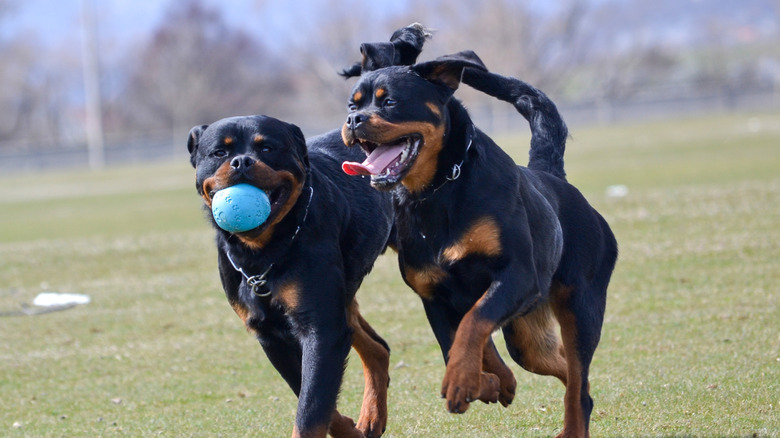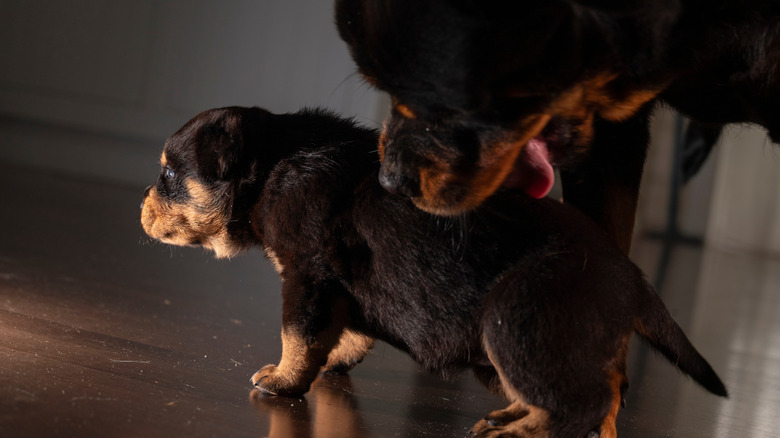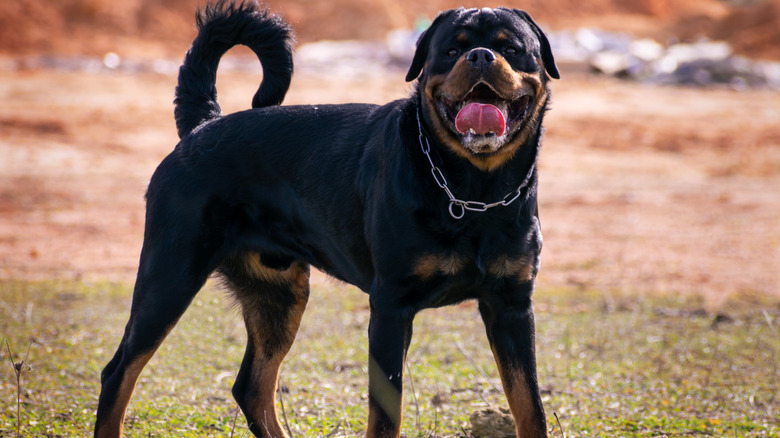Difference Between An American Rottweiler And A German Rottweiler
You can usually identify a Rottweiler by its striking, black coat and muscular build. These strong dogs are widely known for being world-class guardians who will fiercely protect their family. It's probably not surprising that as of 2023, it's ranks as ninth on American Kennel Club's most popular dogs list.
When searching for Rottweilers to adopt, you might be surprised to find two different types: American and German. As it turns out, what you thought was simply a dog breed with a German name has morphed into a multidimensional, multicolored, and multinational breed.vBut are there any real difference between an American Rottweiler and a German Rottweiler or any of the other Rottweiler iterations?
The short answer is no — at least not offiically. "German Rottweiler" is a term used in marketing by some American breeders to signify that their breeding stock are imported from Germany or that they descended from famous or less-famous German bloodlines. However, all Rottweilers technically descend from German bloodlines. Likewise, the term "American Rottweiler" may tell you that a dog has a long lineage in the United States. A breeder may try to tell you that the American Rottweiler is a different animal than its German counterpart. However, they are the exact same breed.
It comes down to breeding standards
If there are any physical differences between the American and German Rottweiler, it's the result of breeding decisions. Those breeders who wish for their dogs to achieve the purebred recognition must follow what is mandated by the gold standard: the ADRK — an acronym for Allgemeiner Deutscher Rottweiler Klub (German General Rottweiler Club) — enforces a strict breeding protocol. This protocol mandates that all purebred Rottweilers worldwide must adhere to a specific physical look as stipulated by the definitive Rottweiler registry in Germany, established in 1907. This includes a maximum size of 27 inches in length and a chest that accounts for roughly half of the dog's overall body length. Eyes, meanwhile, must be almond shaped and dark brown in color — any other shade, including yellow is disqualifying. A specific number of teeth is also required to meet the German standard; 42 to be exact.
ADRK versus AKC rules
In Germany, you cannot register a litter of Rottweiler puppies unless both parents pass a strict breed suitability test that evaluates their temperament and health against the breed standard. Therefore, only the best representatives of the breed produce puppies in Germany. The German club is a stickler on size and weight, and a calm, stable temperament is paramount.
In the United States, the rules are less restrictive. Consequently, you'll see Rottweilers born in the U.S. who are larger or smaller than ones in Germany. You'll also see some dogs with varying conformations because that's what the breeder prefers, regardless of whether it's the "correct" breed standard of the AKC or ADRK. Still, one should note that the AKC Rottweiler breed standard is very close to or falls into the same range as the ADRK standard for size, weight, and temperament.
The tail tells
Every ethical Rottweiler breeder's passion and responsibility should be to preserve the integrity of the breed, which means breeding Rottweilers that conform to the breed standards set out by the ADRK—with one controversial exception dictated by the AKC.
To dock or not to dock? That is the question. Although banned in several countries, the United States continues to promote docking — also known as bobbing — Rottweiler tails short and close to the body, leaving one or two tail vertebrae per the AKC breed standard, a significant diversion from the ADRK breed standard.
In 1999, Germany banned tail docking and ear cropping of dogs. Thus, the ADRK modified the breed standard for Rottweilers to reflect this change. This means a Rottweiler living in Germany or imported from Germany today will have a naturally long tail, marking a visible distinction from a Rottweiler bred in America. However, if you prefer to leave a dog's tail as nature designed, there are some American breeders who do not dock.



